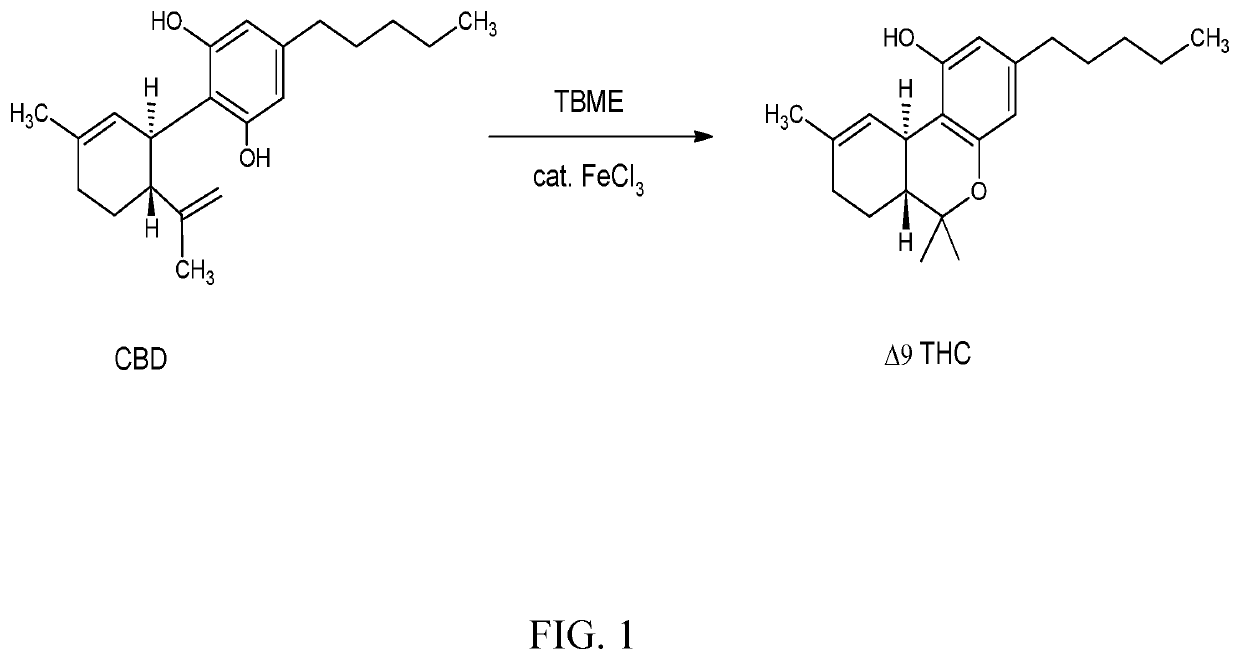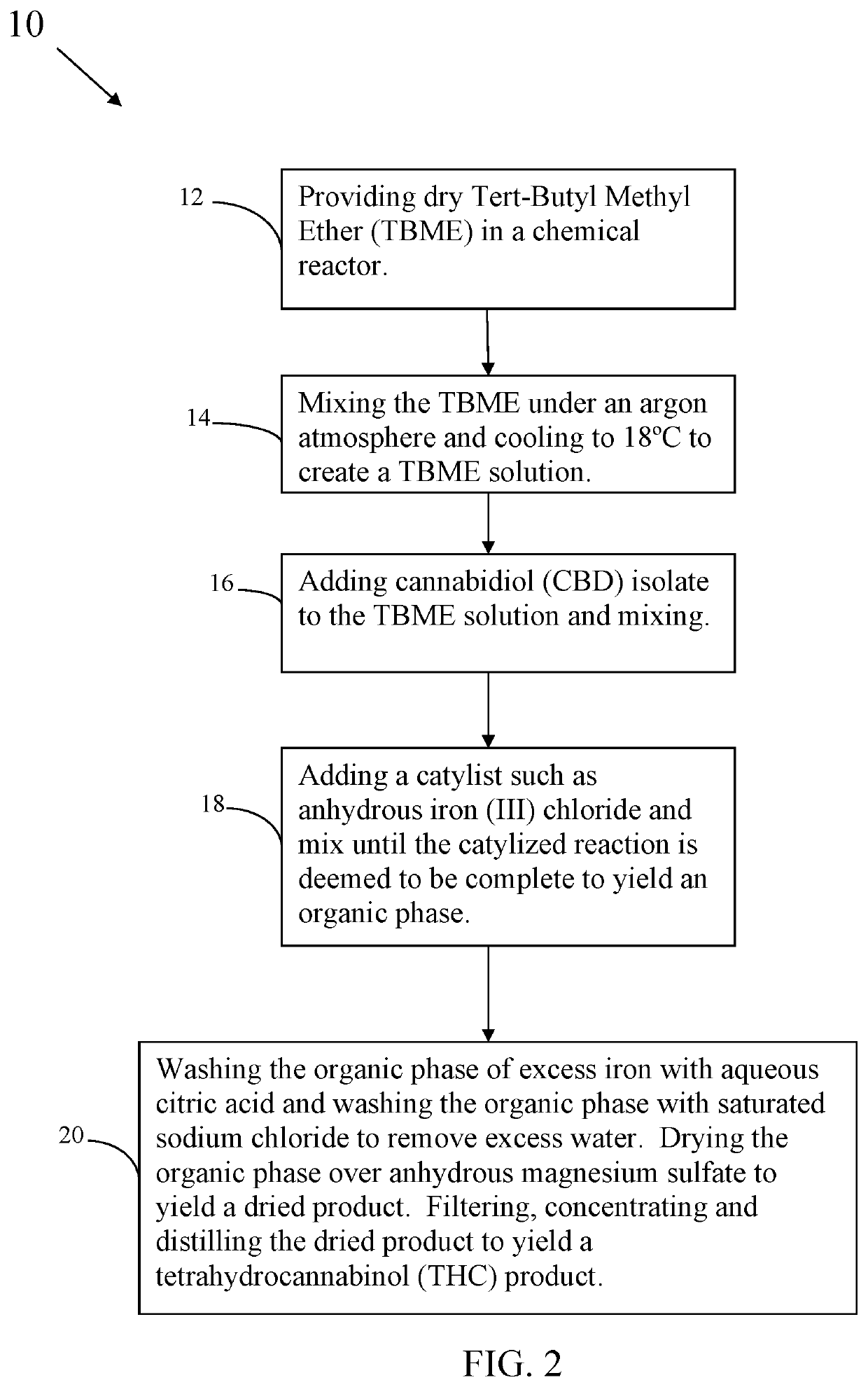Catalytic conversation of cannabidiol and methods thereof
- Summary
- Abstract
- Description
- Claims
- Application Information
AI Technical Summary
Benefits of technology
Problems solved by technology
Method used
Image
Examples
Embodiment Construction
[0024]FIG. 1 shows a chemical reaction converting CBD to Δ9 Tetrahydrocannabinol (THC) with the FeCl3 catalyst. Preferably, the reaction converts cannabidiol (CBD) into Δ9-Tetrahydrocannabinol (Δ9-THC) and detectable amounts of Δ8-Tetrahydrocannabinol (Δ8-THC).
[0025]A method of the invention provides a polar aprotic solvent such as Tert-Butyl Methyl Ether, Tetrahydrofuran, dicloromethane, or chloroform. Cannabidiol starting material mixes into the polar aprotic solvent in a chemical reactor to make a cannabinoid solution. Adding a metallic catalyst capable of performing intramolecular hydroalkoxylation to the cannabinoid solution and mixing it converts the cannabidiol into Δ9-Tetrahydrocannabinol (Δ9-THC) and Δ8-Tetrahydrocannabinol (Δ8-THC) in a ratio of at least 6:1. The catalyst is a metal such as a transition metal or is selected from the group consisting of ruthenium, aluminum, iron, gold, silver, copper, platinum, and combinations thereof: In one embodiment a co-catalyst is us...
PUM
| Property | Measurement | Unit |
|---|---|---|
| Temperature | aaaaa | aaaaa |
| Fraction | aaaaa | aaaaa |
| Fraction | aaaaa | aaaaa |
Abstract
Description
Claims
Application Information
 Login to View More
Login to View More - R&D
- Intellectual Property
- Life Sciences
- Materials
- Tech Scout
- Unparalleled Data Quality
- Higher Quality Content
- 60% Fewer Hallucinations
Browse by: Latest US Patents, China's latest patents, Technical Efficacy Thesaurus, Application Domain, Technology Topic, Popular Technical Reports.
© 2025 PatSnap. All rights reserved.Legal|Privacy policy|Modern Slavery Act Transparency Statement|Sitemap|About US| Contact US: help@patsnap.com


